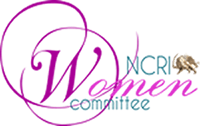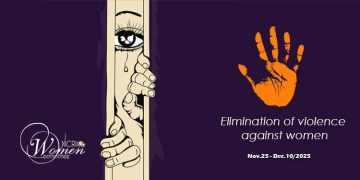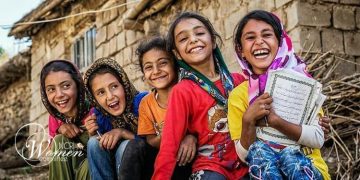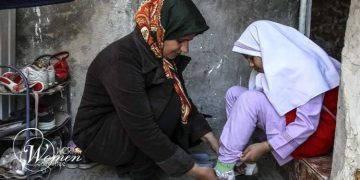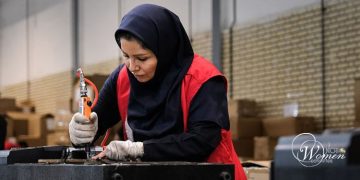
The Gendered Face of Poverty in Iran – In recent years, the economic crisis in Iran has deepened, with poverty now affecting over 30% of the population by the end of the Persian year 1403 (March 2025), according to official figures.
However, according to unofficial estimates, around 80% of the population in Iran lives below the poverty line and cannot consume 2,100 calories a day; this means over 72 million people are living in poverty in Iran.
Yet behind this general statistic lies a harsher, more invisible truth: women in Iran are disproportionately impacted by poverty, both economically and socially, due to structural inequalities, legal discrimination, and systemic exclusion from the labor market.
A report by the Iranian Parliament’s Research Center (Majlis) confirms that by 1401 (March 2023), over 32 million Iranians lived below absolute poverty. This line is defined as the inability to afford necessities such as food, housing, healthcare, and education. But women, particularly female heads of households, rural women, and single mothers, face unique vulnerabilities that these figures only hint at.
Food Insecurity and Health: Women Eat Last
The article published on Bahar News in April 2025 highlights a sharp rise in food insecurity: 55% of urban households are unable to meet their nutritional needs, and the average daily calorie intake has dropped to 2,540 kcal, 60% of which comes from low-nutrition carbohydrates. But this burden does not fall equally.
In many Iranian households, especially in more traditional or rural settings, women often sacrifice their food portions for children or male family members.

According to a World Bank feature from March 2023, nearly 40% of Iran’s economically active women work informally, meaning they lack labor protections, pensions, or stable income. In families facing high food prices, where the cost of groceries consumed 58% of the minimum wage in January 2025, women are typically the first to reduce their consumption.
This malnutrition contributes to a rise in illnesses disproportionately affecting women.
The Iranian Ministry of Health has reported that by late 2023, more than 7 million people had type 2 diabetes, and over 10 million suffered from hypertension, conditions closely linked to poor diets. Women also suffer increased rates of osteoporosis, partly due to reduced dairy consumption caused by inflation (27–43% in dairy prices in 2024 alone).
Economic Dependency and Legal Disadvantage
Female-headed households—now making up over 12% of Iranian families—are among the most vulnerable. Many of these women are widowed or divorced, but others are de facto heads of households due to male partners’ unemployment, drug addiction, or imprisonment. Yet they face widespread legal and economic barriers to independence.
The Iranian regime’s labor laws, combined with patriarchal norms and systemic discrimination, exclude women from many sectors or subject them to exploitative conditions. According to the World Bank, Iran has one of the lowest female labor force participation rates in the Middle East, just 14% as of 2022. Women who work often earn significantly less than men and are far more likely to be in informal, insecure jobs such as home-based sewing, domestic work, or street vending.
This lack of income translates into reduced access to housing, health services, and even personal safety.
Shelters and safe havens for women fleeing domestic violence are few, underfunded, and closely monitored by the state. Many women stay in abusive relationships simply because they cannot afford to leave.

Geographic Disparities Amplify Gender Gaps
In provinces like Sistan and Baluchestan in the southeast, and Hormozgan, Ilam, and Kohgiluyeh and Boyer-Ahmad in the southwest, poverty rates exceed 60%. These areas, already suffering from water shortages, underdeveloped infrastructure, and poor access to healthcare, are also home to some of the country’s most marginalized women.
In Sistan and Baluchestan, where nearly two-thirds of the population lives in poverty, girls often drop out of school early due to poverty-related pressures, including child marriage. The literacy rate for women here is significantly below the national average. Meanwhile, in urban centers like Tehran, Isfahan (central Iran), and Mazandaran (northern Iran), poverty rates are below 13%, reflecting massive inequality in access to services and opportunities.
Rural women in these poorer provinces often have no access to bank accounts, formal employment, or property rights. If their husbands die or abandon them, they are left without social protection and must rely on informal networks—or forced remarriage—for survival.
A Cycle of Dependency and Marginalization
The Iranian regime has failed to address the gendered dimensions of poverty. Monthly cash subsidies and the promised distribution of food vouchers—announced by the regime’s president, Masoud Pezeshkian, in his sixth month in office—have done little to alleviate the long-term pressures on women.
These blanket policies do not account for regional disparities or gender-specific needs. As the World Bank warns, general cash payments lose effectiveness in inflationary environments and often fail to reach informal workers, many of whom are women.
Amnesty International has also noted that women’s unpaid care labor remains invisible in national statistics and unrecognized in policy debates. Women are expected to care for children, the elderly, and sick family members, while having almost no public services to support them. This unpaid work is one of the biggest reasons women cannot engage in formal employment, making them more dependent on male relatives and more vulnerable to poverty when those men are absent or unable to work.

Structural Solutions Needed, Not Slogans
As it stands, the Iranian regime’s refusal to confront the structural roots of gendered poverty is not merely negligent—it is deliberate.
By maintaining discriminatory laws, suppressing civil society voices, and denying women access to economic and legal independence, the regime perpetuates a system in which poverty is not an unfortunate consequence but a tool of control.
Temporary subsidies and rhetorical promises do nothing to dismantle the institutionalized inequality that keeps millions of women trapped in cycles of hardship. The truth is that this regime cannot be reformed; it is the root of the problem. Only a complete and permanent change in governance can create the conditions for justice, equality, and dignity for Iranian women.

